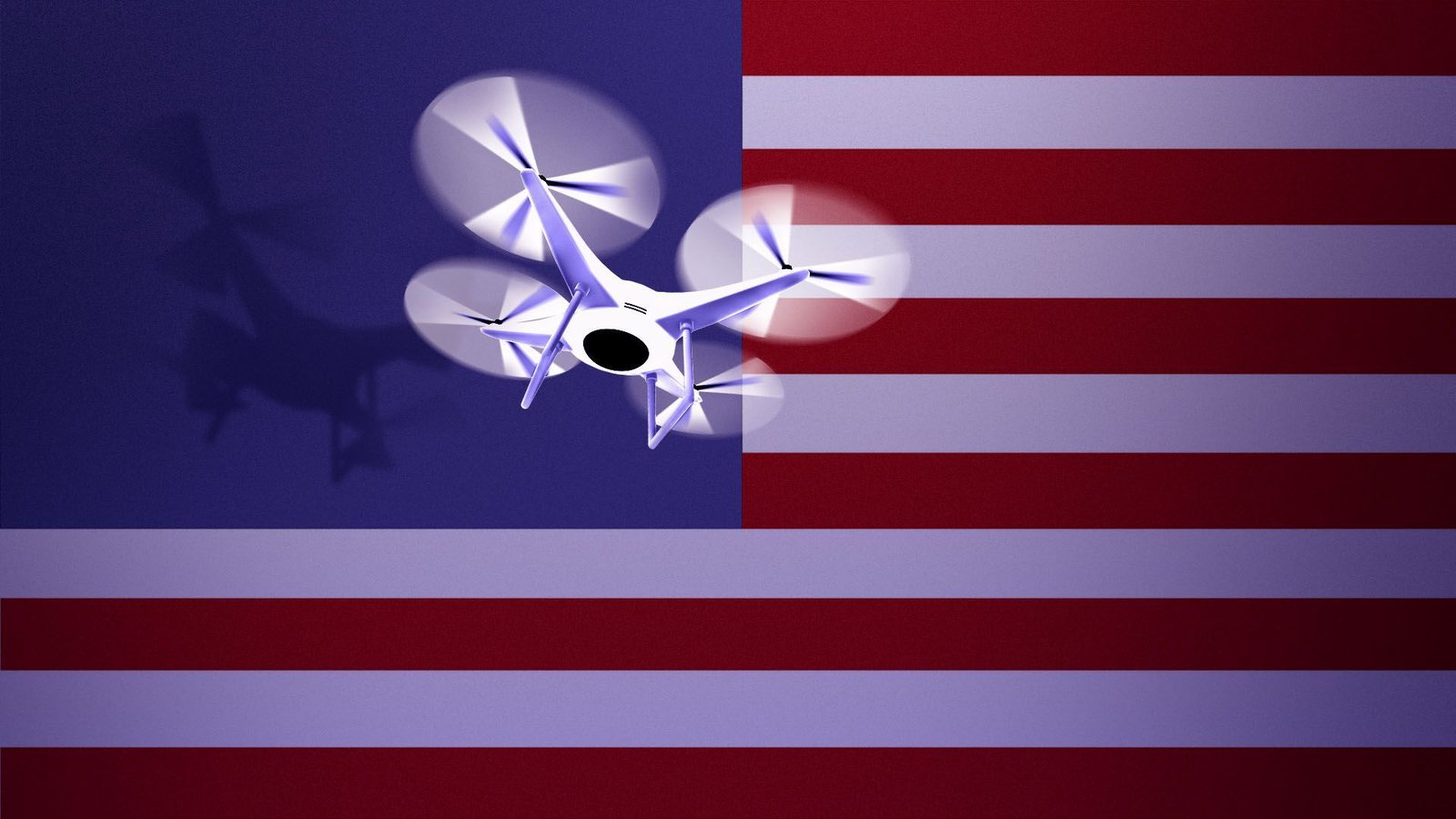Drone hysteria has been gripping the East Coast. It’s proven two things:
• Unmanned tech flexed by the Pentagon and so frequently seen in faraway wars has permeated public thinking.
• The U.S., with its patchwork abilities to report, track and engage drones, is not ready for a real incursion. Why it matters: Foreign surveillance of sensitive sites — military outposts, nuclear energy plants, weapons factories and more — is a serious hazard. But in many purported instances, that’s simply not what’s happening.
• Civilian planes, helicopters, constellations and Christmas lights can from afar look menacing.
• Nothing alien or nefarious is afoot in the Northeast, according to statement after statement.
Yes, but: The calls for a response have shown how countering drones and other aerial threats looks vastly different on the battlefield than it does at home. And who, exactly, takes the lead gets messy.
• In Ukraine, Israel and the Red Sea, overhead attacks are detected by visuals, acoustics, radar and other means before they are disabled by electronic interference, entangling nets or pricey interceptors.
• It gets far trickier over populated peacetime areas with sparse self-defense. Plummeting aircraft or debris can kill people; errant munitions can wreck city blocks.
• “The intelligence, surveillance and reconnaissance capabilities that we can employ outside the homeland aren’t capabilities that we can necessarily deploy inside the homeland,” Pentagon spokesperson Maj. Gen. Pat Ryder told reporters.
• Responsibilities in the U.S. are fragmented among the Defense, Transportation and Homeland Security departments as well as the FBI and the Federal Aviation Administration. Shooting at aircraft, manned or not, will land the average person in serious legal trouble.
Our thought bubble: Confirmed cases of drones buzzing critical infrastructure are likely penetration tests, a move familiar to those in cyber circles.
• Let’s prod their defenses and gauge reactions, you can imagine a Russia or China or extremist cell saying. What can we learn, and how can we adapt?
What they’re saying: “Drones can easily enter and traverse airspace, yet authorities often don’t know who’s operating them, whether their presence is a threat, or how to respond effectively,” Hidden Level CEO Jeff Cole told Axios.
• “It’s no longer just an FAA or Air Force issue — drones represent tangible risks to critical infrastructure and human safety, requiring a collective approach to ensure security for everyone.”
Between the lines: This feels like Chinese spy balloon déjà vu. Little has changed since then.
• There were then the same questions about spotting, tracking and interdiction. There were also the same worries about those responsible and what they were collecting.
• The balloon, though, was brought down over the ocean by an F-22 strapped with an AIM-9X missile. That’s not even remotely realistic here.
Catch up quick: Federal authorities this week called on Congress to enact legislation that “would extend and expand existing counter-drone authorities to identify and mitigate any threat that may emerge.”
• This comes after Senate Majority Leader Chuck Schumer (D-N.Y.) demanded the deployment of “special drone-detection tech,” President-elect Trump suggested shooting them down, and Rep. Jeff Van Drew (R-N.J.) wildly claimed an Iranian mothership was involved.
Be smart: Imaging specialist Maxar published photos showing Tehran’s latest drone carrier, the Shahid Bagheri, anchored near Bandar Abbas in the Persian Gulf.
The bottom line: No single policy change or piece of gear will solve this cluster. It requires an overhaul of domestic defense, including considerations for information warfare.
